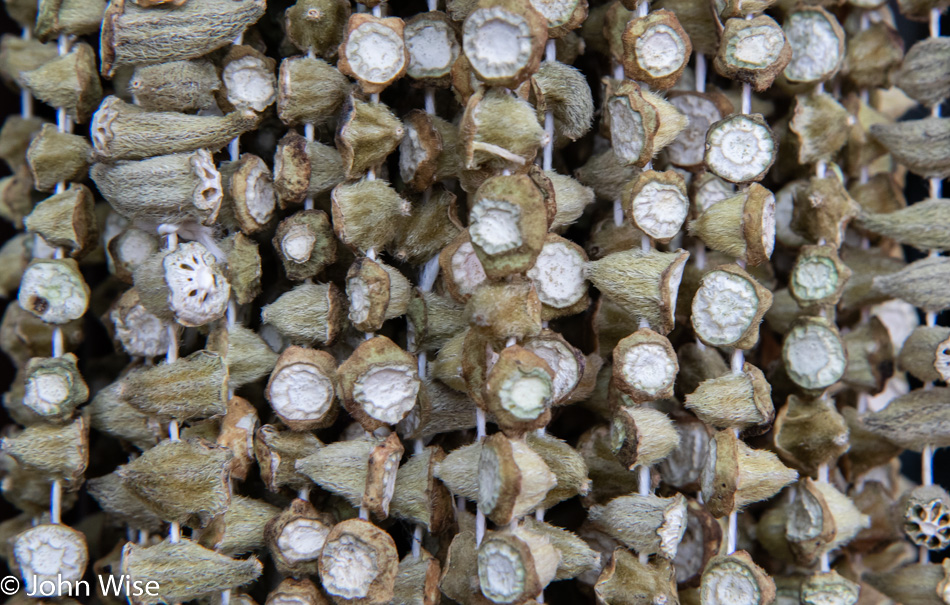
As has been typical on this trip, it’s difficult sleeping past 6:00, so we give in, get ready for the day, pack, and head downstairs to wait for breakfast to become available at 7:00. It’s down here in the breakfast nook that we meet Dina, a young college-educated Muslim woman working at our hotel front desk due to the reality of the Bosnian economy. She’s lucky, though, as she has a job in a city that has nearly 50% unemployment. Her wage is a pittance in our view as she earns approximately $375 a month, of which rent takes a third of her income. Food chews through another $100 a month, leaving her with about $150 a month for everything else.
Here comes the admission of my guilt from the recognition of just how spoiled we are and how fearful I am that we should ever take our privilege for granted. Caroline and I are spending about $750 a day to be on this Balkans adventure. The reality that we are spending two full months of Dina’s pay per day on vacation is a sobering thought. I stopped to take serious inventory of this idea and let it sink in that we are spending two years and two months of her total income-earning ability on nothing more than two weeks of sightseeing and rafting.
Dina’s opportunity to even leave this city becomes a near impossibility; traveling to other countries is a distant dream. Compare this to an American near the lower range of the economic pie who seems to have an endless supply of cash in order to take themselves to McDonald’s, buy video games and garish clothes, and smoke vapes and weed while still having enough left for the occasional tattoo. Now I understand a little more why all of those things are in short supply here in the Balkans, they are part of the advantage born to those in the wealthier corners of the world. With that in mind, I can see that there are still dreams being had with hopes of things working out.

Sometimes, you cannot see what is just in front of you. How reality is about to take a detour can be just seconds away, and your path may not be so lucky to simply change; it might be about to come to an end, but I’ll come back to that.
A little more aware of our surroundings, it was time to explore the Old Town in the light of day. Without a plan, we headed to the banks of the Miljacka River, looking to wander about and see where our feet might take us.
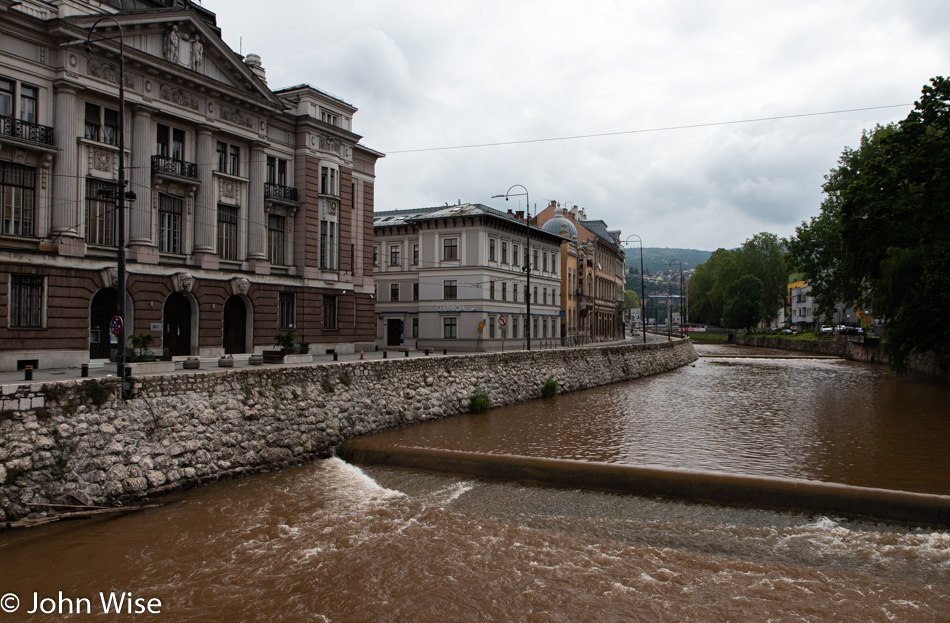
Days after this photo was taken, we learned that the river spilled out of its channel and headed up the hill, putting much of Old Town underwater.
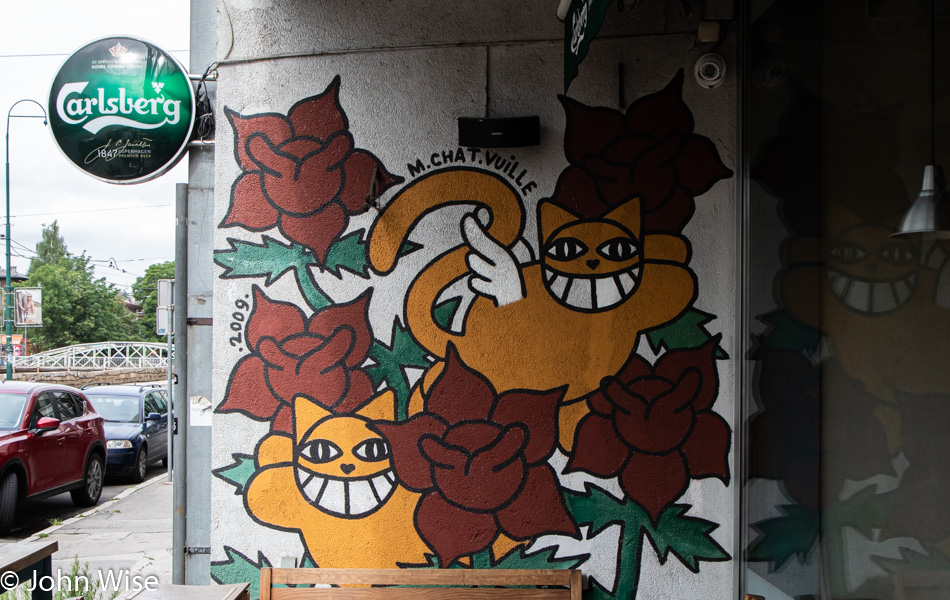
Monsieur Chat strikes again.
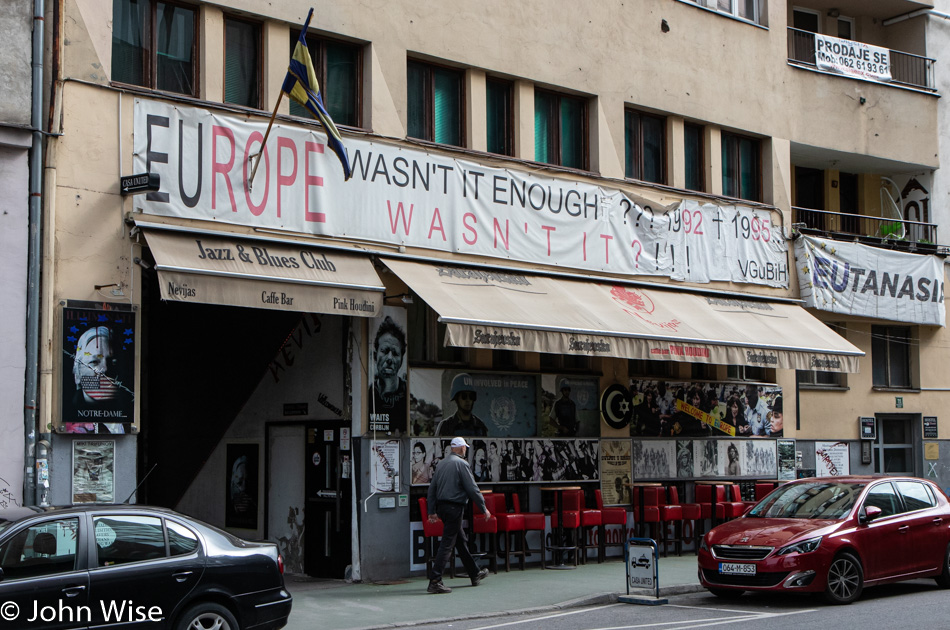
The desire for peace and the angst that bedevils the young at heart when war and chaos seem to be the order of the day hopefully inspires them to take action, as this apparent collective has. This little building front has another connection to Caroline and me that is not readily seen in this scaled-down image: just under the Islamic Crescent, with its star replaced by the Star of David, is a poster for an event titled “Spirit Journey of the Hopi People.” Being from Arizona and making a connection to the indigenous and often maligned Native American people in our corner of the world draws certain parallels to the politics of the region we are in today.
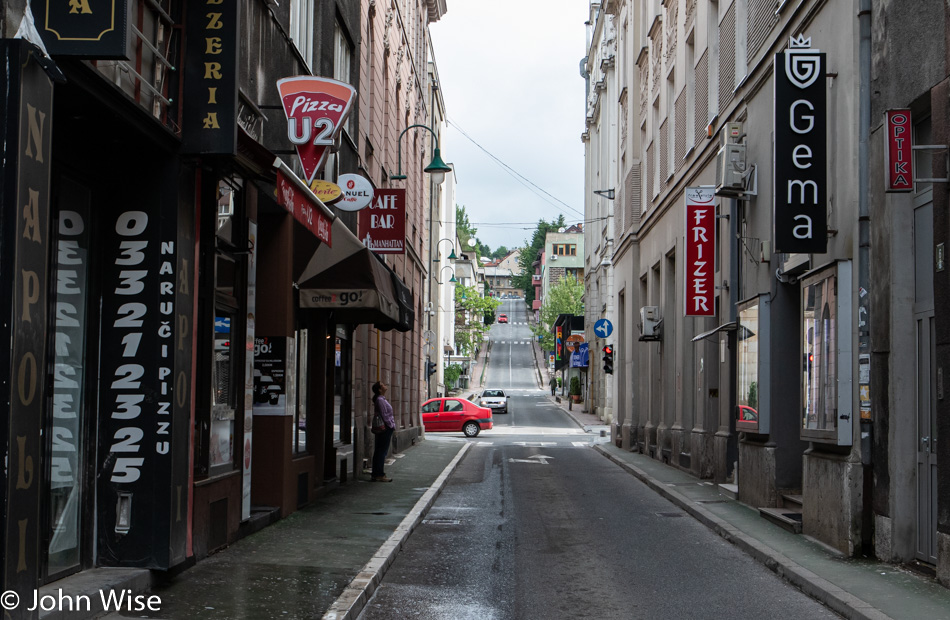
Not everything is supposed to be iconic or memorable. Sometimes, the sidestreets are mundane, but they, too, are an important part of the landscape that shouldn’t be forgotten. It’s the totality of the environment that paints the complete picture of where we’ve been.
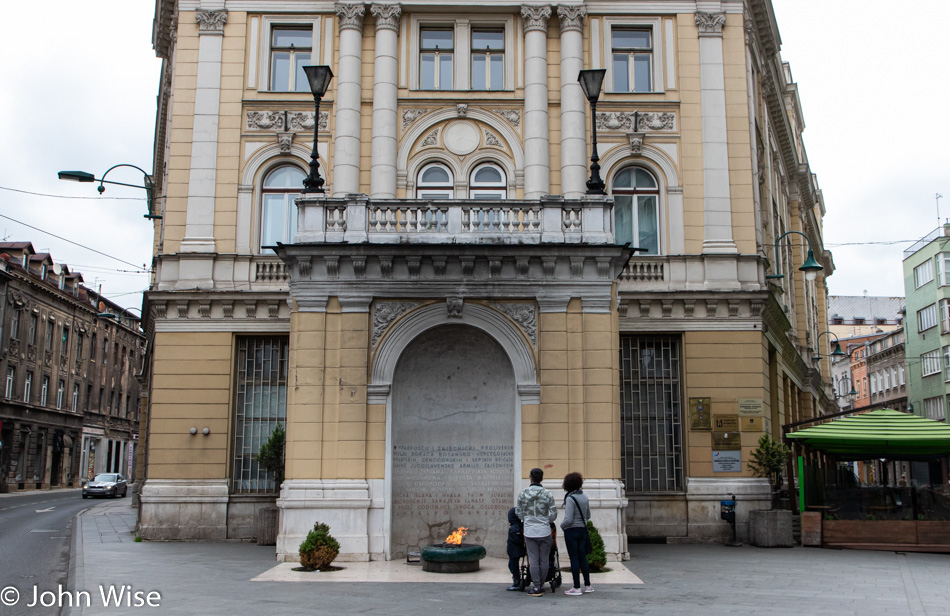
Vječna vatra, or The Eternal Flame, is a small World War II Memorial that was dedicated on 6 April 1946, the first anniversary of the liberation of Sarajevo. The inscription reads:
With courage and the jointly spilled
blood of the fighters of the Bosnian-Herzegovinian,
Croatian, Montenegrin, and Serbian brigades
of the glorious Yugoslav Army; with
the joint efforts and sacrifices of Sarajevan patriots
Serbs, Muslims, and Croats on 6 April 1945.
Sarajevo, the capital city of the People’s Republic
of Bosnia and Herzegovina was liberated.
Eternal glory and gratitude to the fallen heroes
for the liberation of Sarajevo and our homeland,
On the first anniversary of its liberation—
a grateful Sarajevo
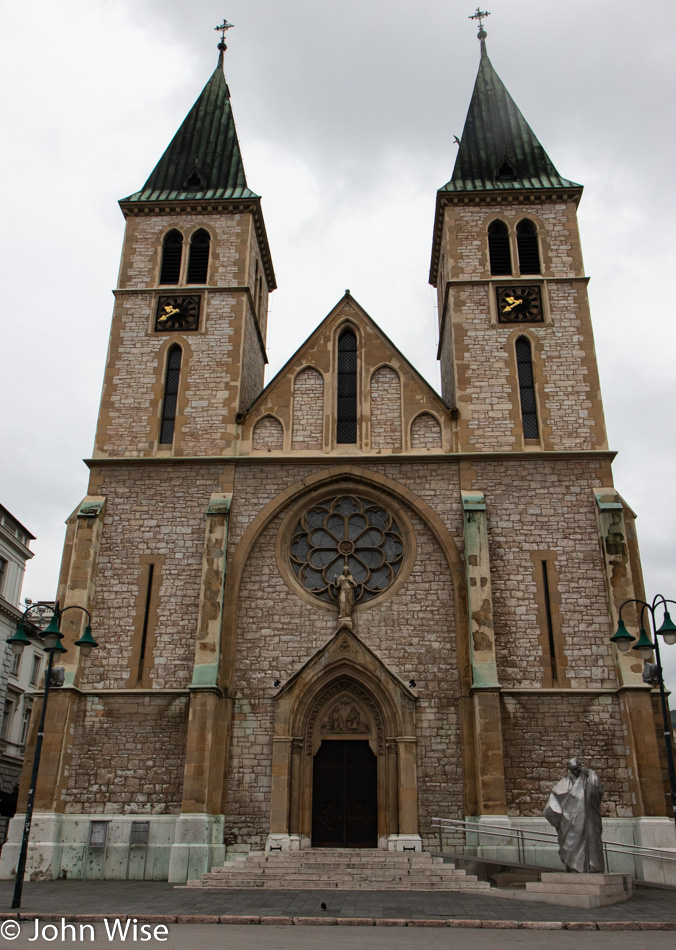
The Sacred Heart Cathedral is relatively new in the realm of old-world cathedrals, as groundbreaking occurred back in 1884; could have been yesterday.

The city of Sarajevo is made up of Serbian Orthodox Christians, Sunni Muslims, and Roman Catholics distributed between the Bosnian, Serbian, and Croatian populations.

Earlier in this post, I spoke of things just ahead and that I’d return to the reference I was making. One hundred five years ago, a man and woman driving up this street in front of me who had just left City Hall were assassinated. They couldn’t see it coming because if they had, they might have taken a turn and gone the other way. Instead, the trigger for the beginning of World War I had just been pulled. Within a month, the leadership of the Austro-Hungarian throne ordered the invasion of the Kingdom of Serbia after determining that the Black Hand secret military society had arranged the assassination of Archduke Franz Ferdinand of Austria and his wife Sophie, Duchess of Hohenberg. This also was the fall of the Habsburg Empire and the conditions for instability in Europe that would ultimately lead to World War II.
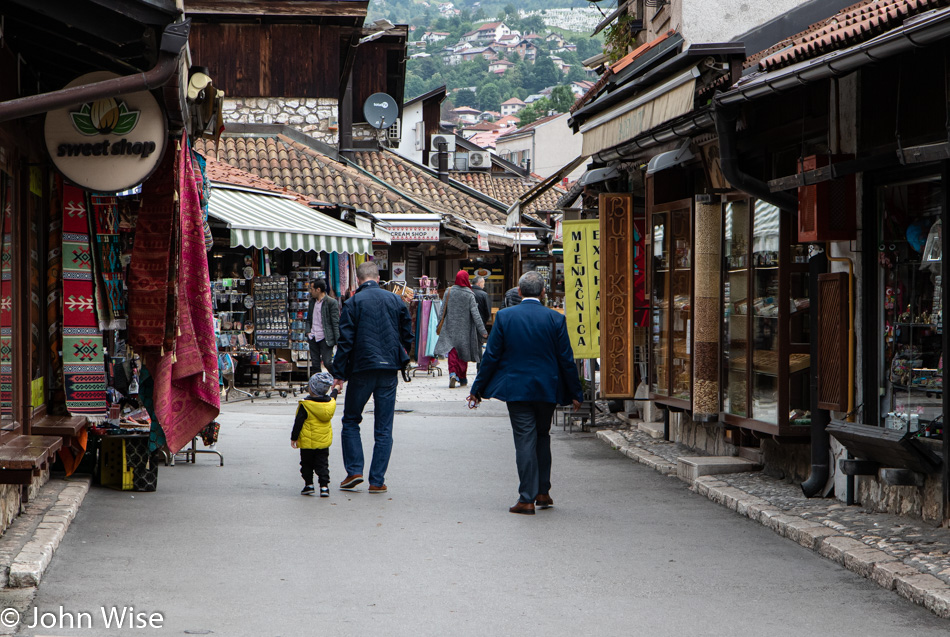
The fascism, racism, intolerance, and fear from those who feel under attack by changes in culture are still alive and well; they may even be thriving. The recent European elections are a reflection of the tensions that exist between generations who dislike the pressures that evolution demands of them to adapt and the younger generations who enjoy reaping the benefits of that cultural exchange where developing complexity asks them to learn new ways of doing things. The dichotomy between the two threatens to bring people to war. The victims are not those who bring the hate as they are sowing misery upon others so these innocents can suffer with them. Instead of adopting new skills and attitudes, the staid mongers of anger would prefer chaos and death instead of capitulation.
How does one ask a 2-year-old child, wearing a beanie and holding his father’s hand, to understand that someone else sees the woman ahead in a hijab as a threat? Obviously, you do not consult the child because he and his father just want each other to live well into old age. Instead, you instill fear and anxiety in those who are susceptible and then exploit that wound by threatening that everything they love is in danger of disappearing if you don’t go along with the pogrom that will restore order. Maybe you can excuse me if I tend to think we are a planet of idiots.
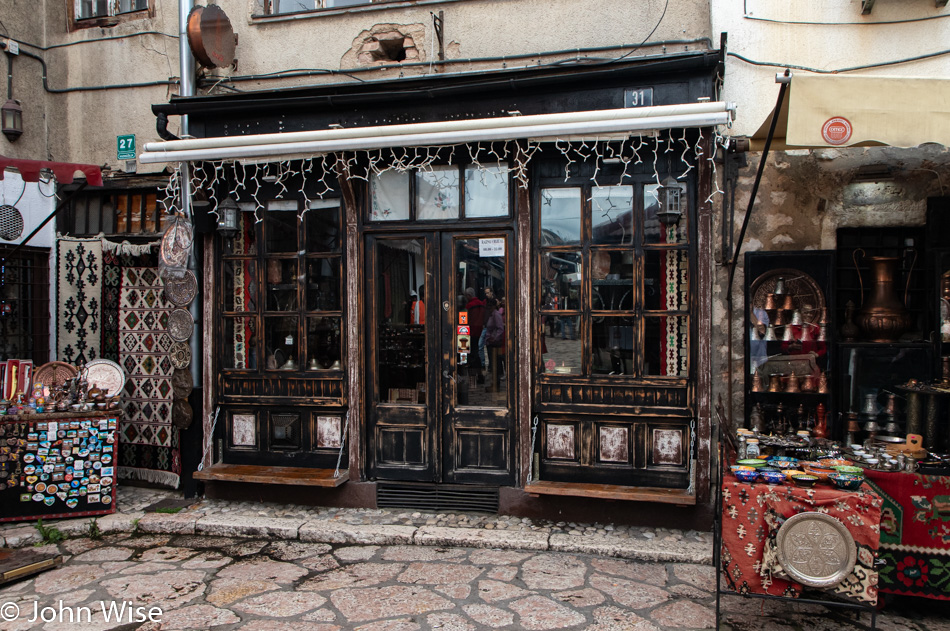
From the doors of perception to the doors that open into our past, present, and future, we have this incredible opportunity to find knowledge by stepping over the threshold. The first step in this process is that one must be willing to walk into the unknown. Leaving Phoenix, Arizona, so many weeks ago, I could never have anticipated that a side street in Sarajevo would bring me to such a beautiful corner and that things I’d never seen before would start becoming a part of who I am. I’m not here with prejudice to decide what I don’t like, nor am I here to look down upon people whose customs are foreign to me. I’m a guest in their universe with barely enough time to gather but a few impressions. Those things I take away are, more often than not, little treasures that stock my mind, just as the trinkets on these tables offer the tourist a permanent reminder of the place they’ve visited.
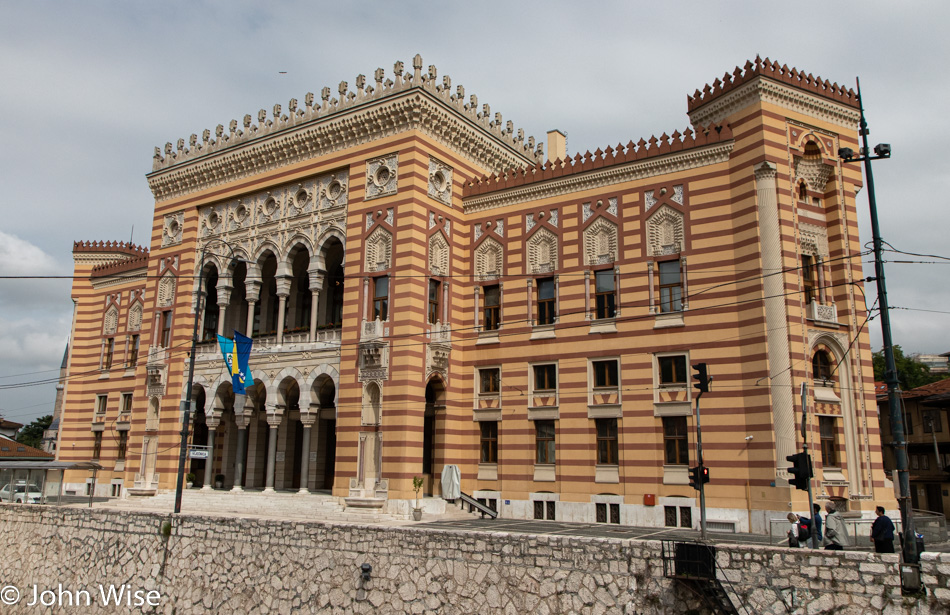
The restored Neo-Moorish-influenced Vijecnica (which translates to City Hall) became the Sarajevo National Library following the end of World War II. During the Balkans War, the building was devastated, with over 90% of its 2 million books lost to fire. The Vijecnica was also the building that Archduke Franz Ferdinand and his wife Sophie, Duchess of Hohenberg, were visiting just before they were assassinated down the street. Today, the restored building stands as a National Monument used for special occasions.
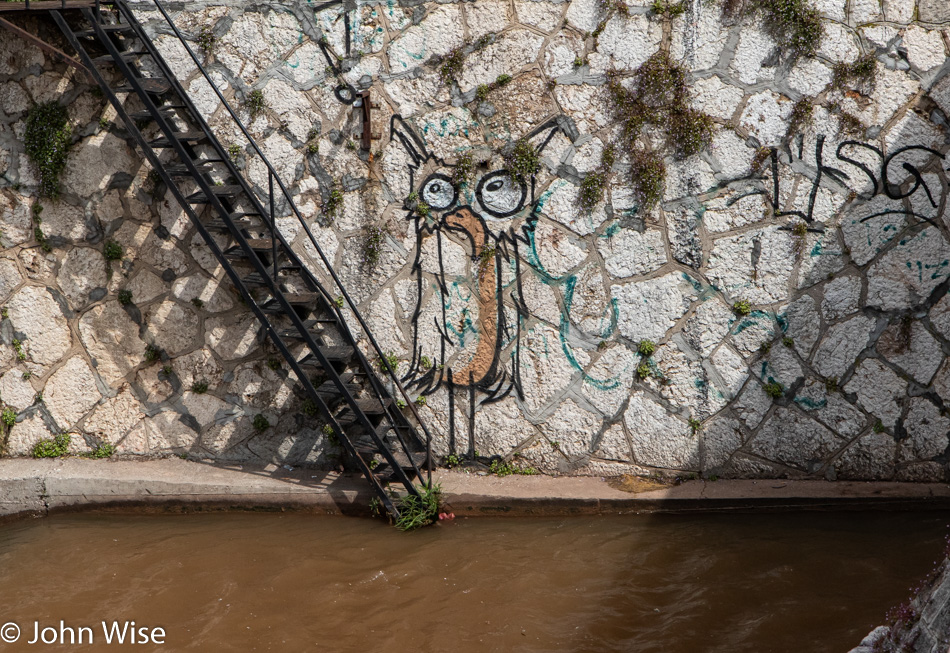
There’s something optimistic about much of the graffiti I’m seeing in Sarajevo compared to the territorial pissing I see in the markings of gang tags sprayed across the environment in America.
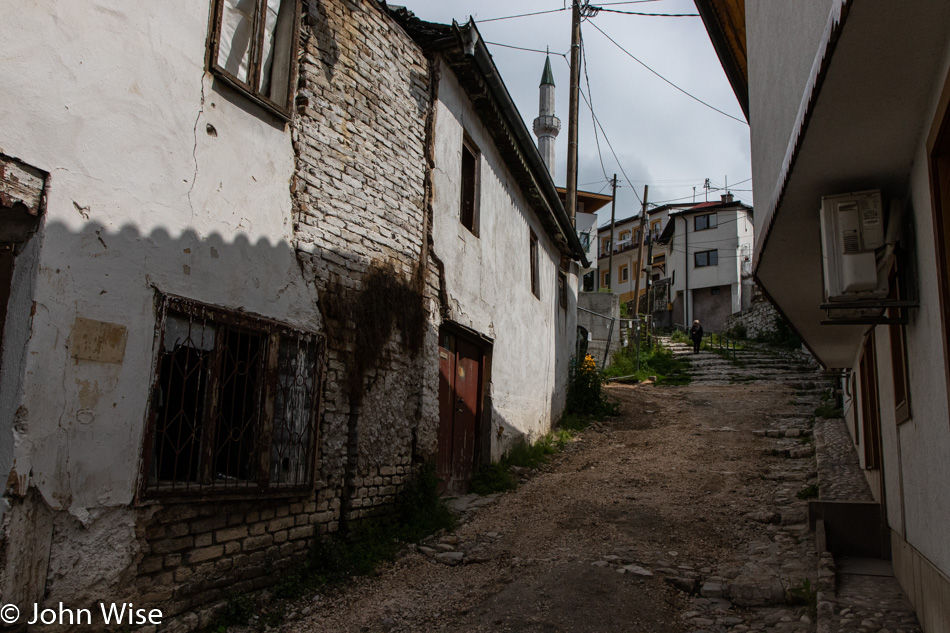
There’s something up the hill that is pulling at my attention. Ruins represent special places in my imagination as the story of what happened there is a mystery. Their emptiness and collapse have an aesthetic that questions the mind to fill in the void of what might have been there. As we ascend the hillside on well-worn steps past crumbling buildings, I wish there were someone here to tell me why things are the way they are along this path.
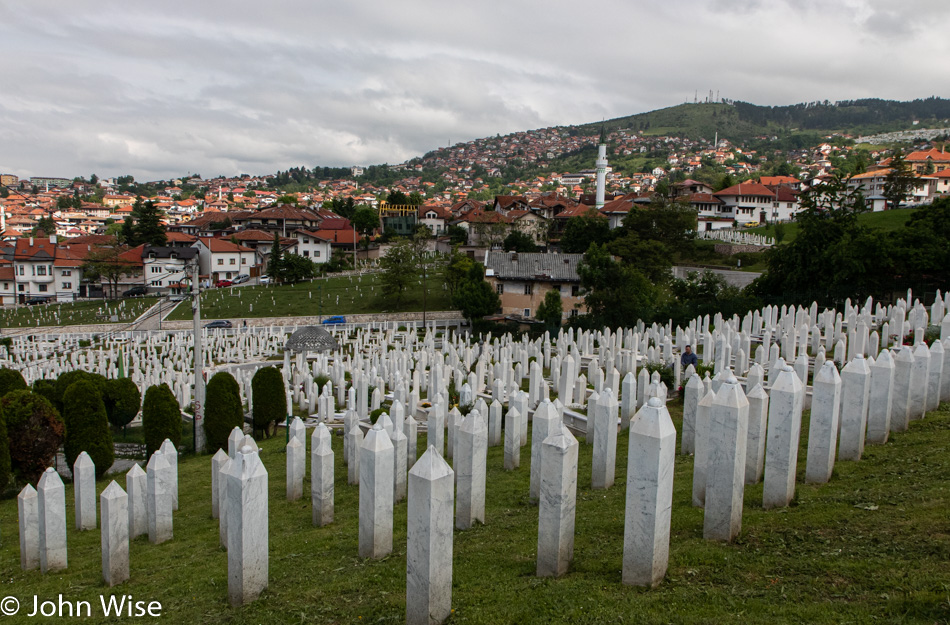
Islamic Kovači cemetery is the first stark encounter we have climbing the hill. We can see through the fence exactly what this is beyond the obvious. I’m referring to the peculiar sight of all the grave markers having dates between 1991 and 1995. This graveyard and the other two we see on surrounding hillsides are of fallen people who were victims of other people’s hatred.
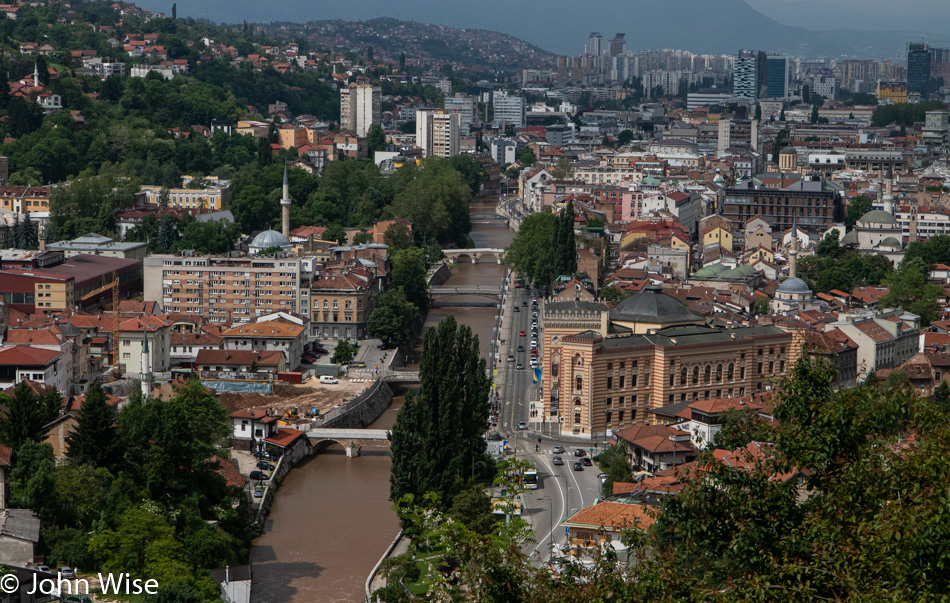
Miljacka River with the Old Town seen from our vantage point climbing the hill.
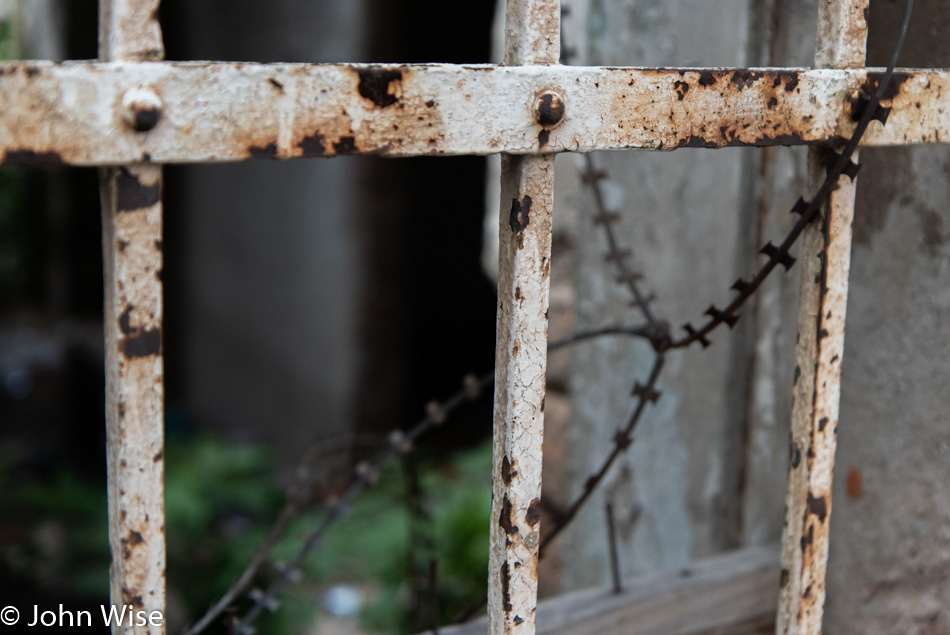
Imposing fences, barbed wire, and warnings of bodily harm protect the place we are trying to get a look at on the top of the hill.

Jajce Barracks was likely the last building built under the authority of Austro-Hungarian rule and represents the final influence of the Habsburg Empire on Sarajevo. The barracks are near collapse, and while there has been interest in building a luxury hotel here, maneuverings regarding details of redevelopment have so far stopped any progress in that direction. These issues are related to limitations imposed in the Balkans peace plan that put a damper on allowing certain improvements to occur on lands in dispute.

Back down the hill, we go for a scheduled group lunch at Bosanska Kuća Steak House.

Pigeon Square is more like Zombie Pigeon Apocalypse Land, where you are invited to have a thousand flying rats shit on you. We passed on paying the guy who was selling pigeon meth that apparently drives these evil-winged things into crawling over your head and arms like former Toronto mayor Rob Ford getting down on a hooker.

Lunch is still a half-hour away, so what better to do than stop for a Bosnian coffee that is 50% fine sandy grounds for that extra jolt of caffeine?

I can tell you something better to do than stop for these super espresso’s before lunch, start with dessert and then have the coffee. Maybe I should mention that I’m lactose intolerant and that having this espresso after eating ice cream, I’m reminded of a Saturday Night Live skit from years ago about Super Colon Blow!
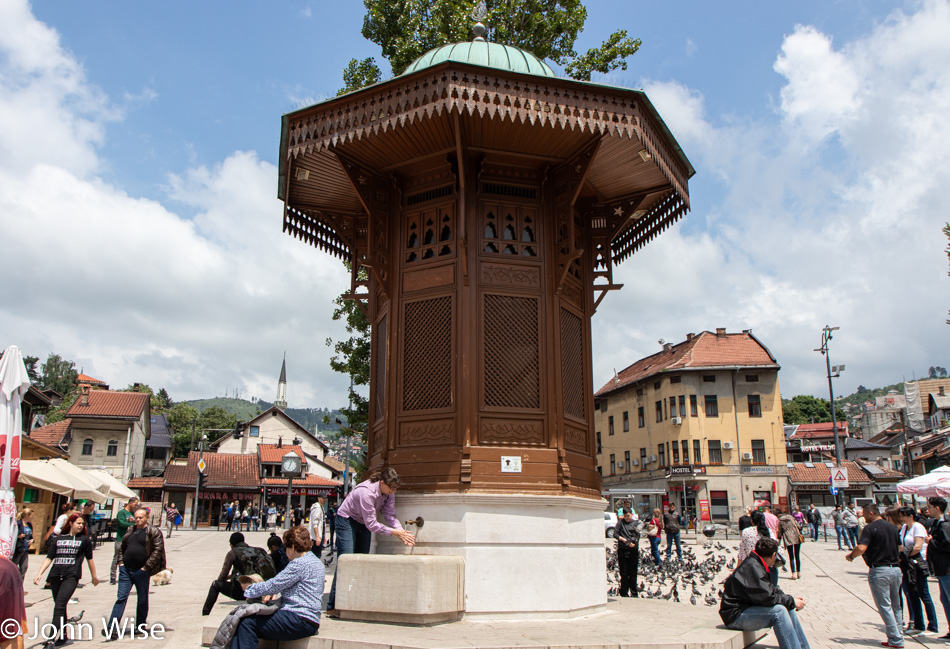
The reference above to Pigeon Square is not literally the name of that location. It is formally known as Baščaršija Square, but because no one has ever been found who can pronounce that word, there’s the easier Pigeon Square. The fountain is a wood fixture known as a Sebilj, which is built in the Ottoman style. After we finished our lunch, our group headed east.

Divlja Rijeka, which translates to Wild River, is the camp located in Tara Canyon near Šćepan Polje at the border area between Bosnia and Montenegro that we are settling into tonight. Caroline and I are staying in cabin #4 which is the one nearest the camera. The cozy little bungalow can sleep four, but it will just be the two of us in our hut. Turns out that we’ll be leaving our gear here for a couple of days until we’re done running the Tara River.

Here we are in front of the Drina River, and just behind us is the confluence of the Tara and Piva Rivers. Come Wednesday afternoon, we’ll be leaving the river for our trek over to Dubrovnik, which will mark the end of this adventure, but this is too early to consider as we still have a near infinity of experiences to collect before we head to the exit.